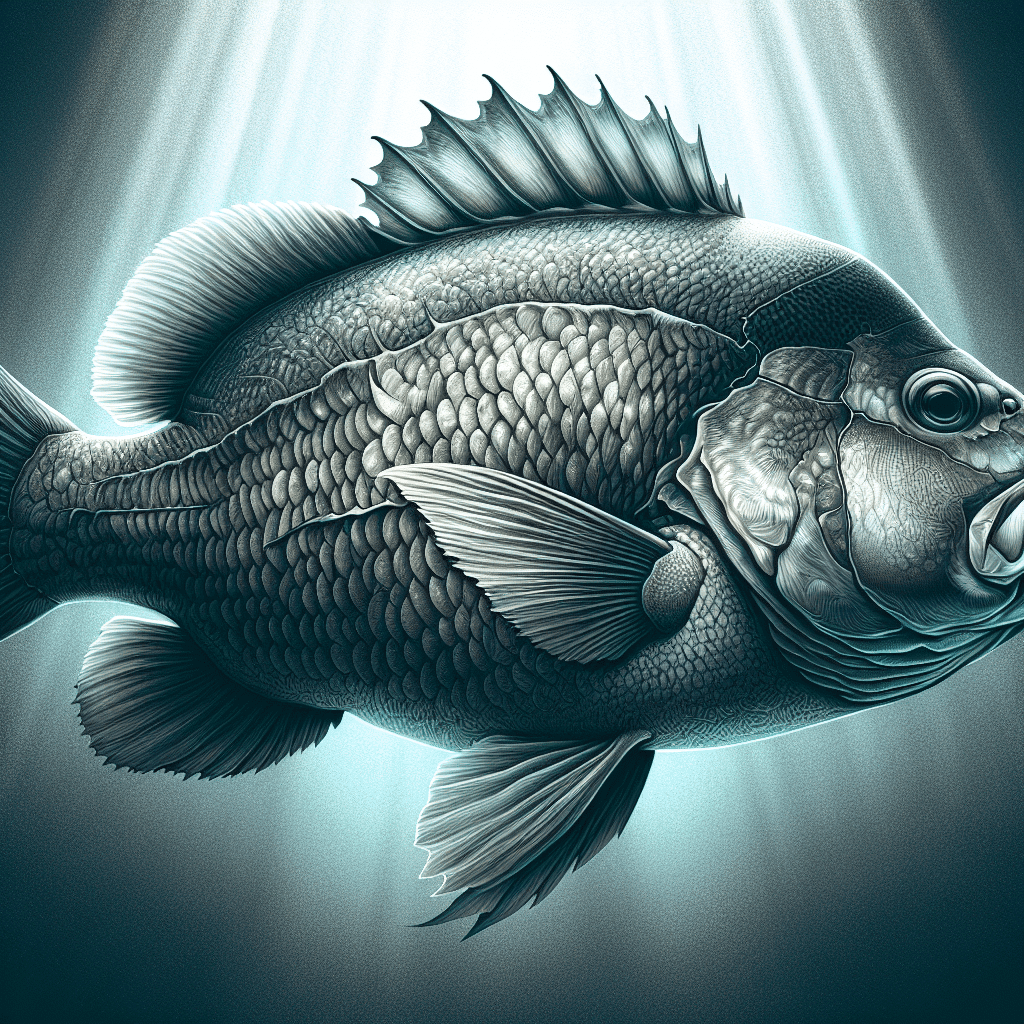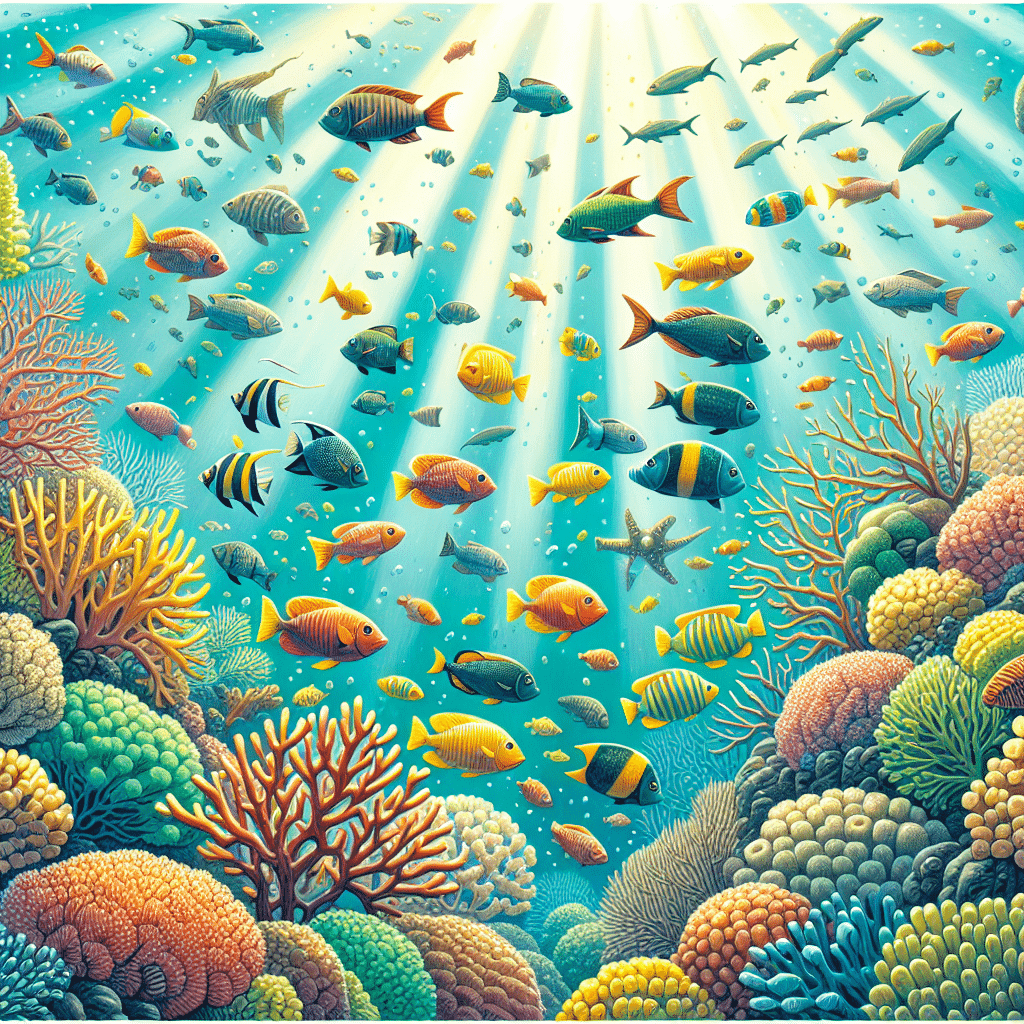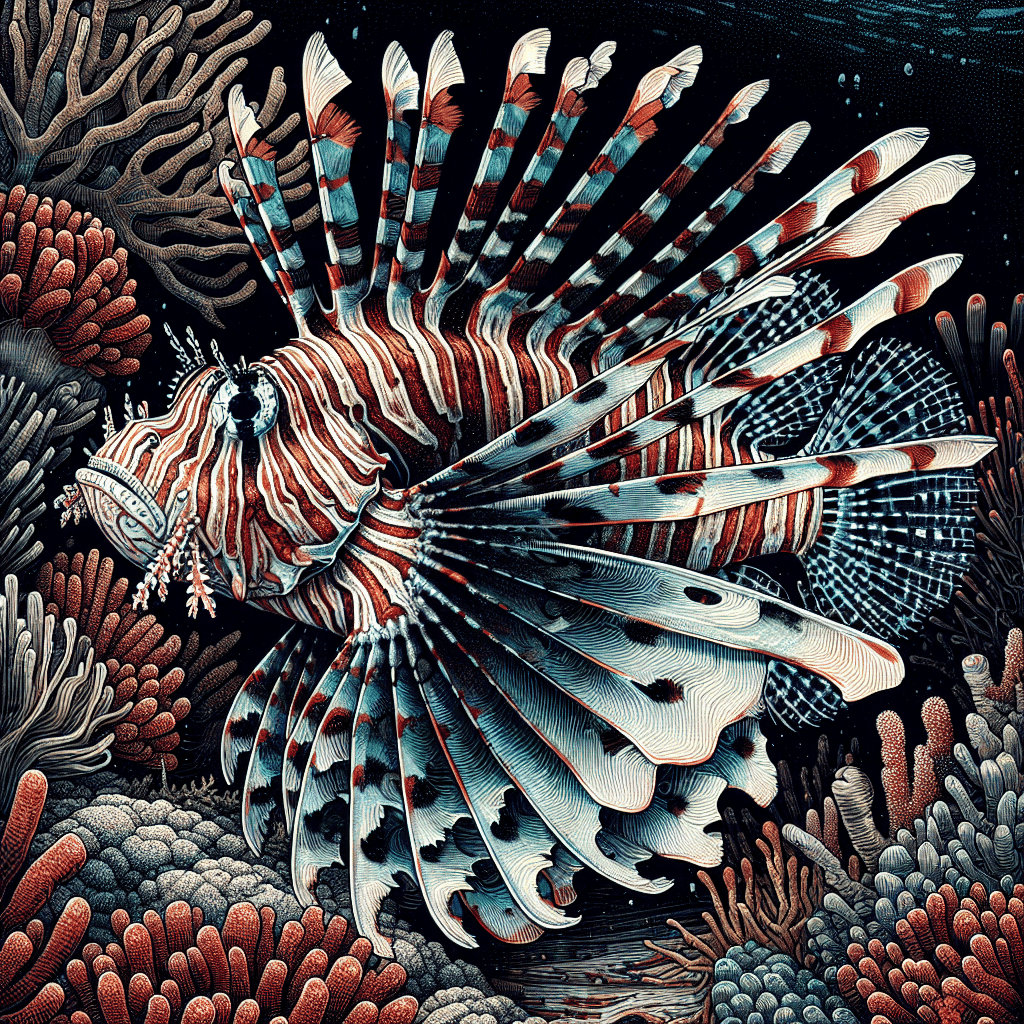Exploring Snappers in Aquariums
Introduction to Snappers
I find that snappers are fascinating fish to keep in my aquarium. They belong to the Lutjanidae family and are primarily marine, though some species can be found in estuaries and even freshwater. With about 113 species in total, snappers offer a variety of options for aquarium enthusiasts. One of the most well-known species is the red snapper, loved for its vibrant colors and unique shape.
These fish can grow quite large; some species reach lengths of up to 1 meter (3.3 feet), while the impressive cubera snapper can grow to around 1.52 meters (5 feet) (Wikipedia). Their defining characteristics include a tapered head and tail with a wide middle, sharp teeth, and, of course, their eye-catching colors.
Habitat and Natural Behavior
Snappers thrive in tropical and subtropical waters across all oceans. Most species prefer living near coral reefs and can be found at depths reaching 100 meters (330 feet). Some even inhabit deeper waters, up to 500 meters (1,600 feet) (Wikipedia).
In the wild, snappers are active carnivores, primarily feeding on crustaceans and other fish. However, a few species are known to be plankton feeders. Their natural behavior in the wild can be quite dynamic, making them an exciting addition to any reef tank.
Here’s a table summarizing some key facts about snappers:
| Feature | Detail |
|---|---|
| Family | Lutjanidae |
| Species Count | Approximately 113 |
| Typical Habitat | Tropical and subtropical regions |
| Depth Range | 0 to 500 meters (0 to 1,600 feet) |
| Common Diet | Carnivorous (crustaceans and fish) |
| Notable Species | Red snapper, cubera snapper |
Keeping snappers can be rewarding, but it’s essential to understand their habitat and behavior to provide the best care in an aquarium setting. For more information about other aquatic species, check out our articles on marine fish and different reef tank fish like grouper and lionfish.
Types of Snappers
When diving into the world of snappers, it’s fascinating to explore the diverse species available. With about 113 species in the snapper family, each one offers unique characteristics that can enhance any reef tank.
Diverse Species Overview
Snappers predominantly inhabit tropical and subtropical regions of all oceans. Most species thrive in marine environments, but some can be found in estuaries and even fresh water. Here is a brief overview of some common species:
| Snapper Species | Maximum Length | Habitat |
|---|---|---|
| Red Snapper | 1 m (3.3 ft) | Marine |
| Cubera Snapper | 1.52 m (5 ft) | Marine |
| Mutton Snapper | 1 m (3.3 ft) | Marine |
| Lane Snapper | 61 cm (2 ft) | Marine |
| Yellowtail Snapper | 76 cm (2.5 ft) | Marine |
Each species has its own feeding habits, primarily being active carnivores that enjoy a diet of crustaceans and smaller fish. This makes them an exciting addition to any aquarium setup, as they contribute to a dynamic ecosystem.
Notable Snapper Varieties
Among the various types of snappers, a few stand out due to their popularity and significance. Here are some notable varieties:
- Red Snapper: This is perhaps the most recognized snapper species, often sought after for its flavor and culinary appeal. It’s also a vital part of recreational fishing in many regions.
- Cubera Snapper: Known for its impressive size, the cubera snapper can reach up to 1.52 m (5 ft). This species is often found in deeper waters and is prized by anglers.
- Mutton Snapper: This snapper is known for its vibrant coloration and is commonly found in Florida and the Caribbean. It can be identified by its distinct markings.
- Yellowtail Snapper: A favorite among both commercial and recreational fishers, the yellowtail snapper is recognized for its yellow stripe running down its body.
Snappers are not just popular in aquariums; they play a significant role in fisheries, contributing to local economies and recreational activities. If you’re considering adding snappers to your tank, understanding these varieties can help you make an informed decision. For more information about other marine fish, check out our section on marine fish.
Care and Feeding of Snappers
Taking care of snappers can be a rewarding experience for any fish tank or reef tank hobbyist. Understanding their feeding habits and ideal tank conditions is essential for ensuring their health and happiness.
Feeding Habits
Snappers are active carnivores that primarily feed on crustaceans and other fish, though some species can be plankton-feeders (Wikipedia). In an aquarium setting, it’s important to replicate their natural diet as closely as possible. Here’s a quick guide on what to feed your snapper:
| Food Type | Description | Frequency |
|---|---|---|
| Pellets | High-quality marine fish pellets | Daily |
| Frozen Food | Shrimp, fish, or squid; thaw before feeding | 2-3 times a week |
| Live Food | Small crustaceans or feeder fish | Occasionally |
| Plankton | For those that are plankton-feeders | Daily (if applicable) |
Make sure to observe your snapper and adjust portions based on their appetite. Overfeeding can lead to health issues, so it’s best to stick to a feeding schedule.
Ideal Tank Conditions
Creating the right environment for snappers is crucial. They thrive in warm waters and prefer specific tank conditions to mimic their natural habitat. Here are the ideal parameters:
| Parameter | Ideal Range |
|---|---|
| Temperature | 75°F to 82°F (24°C to 28°C) |
| pH Level | 8.1 to 8.4 |
| Salinity | 1.020 to 1.025 (SG) |
| Tank Size | Minimum 75 gallons |
Snappers also appreciate well-structured tanks with plenty of hiding spots, such as rocks and plants, which help them feel secure. Regular water changes and filtration are important to maintain water quality, as snappers can be sensitive to poor conditions.
By providing proper care and feeding, along with maintaining ideal tank conditions, I ensure my snappers remain healthy and vibrant. If you’re considering adding other species to your tank, it’s worth checking compatibility with snappers to create a harmonious aquarium environment. For more information on marine fish, visit our section on marine fish.
Snappers in Reef Tank Communities
As I dive into the world of reef tank communities, I find that snappers are both fascinating and essential inhabitants. Their compatibility with other fish and their roles in ecosystems make them a great addition to any marine setup.
Compatibility with Other Fish
When considering adding a snapper to your reef tank, it’s crucial to know how they get along with other fish. Most snapper species are active carnivores, meaning they hunt and eat smaller fish and crustaceans. This predatory nature can lead to compatibility issues, especially in smaller tanks with timid or smaller fish like clownfish or goby species.
Here’s a quick compatibility table to help you out:
| Fish Type | Compatibility with Snapper |
|---|---|
| Clownfish | Low |
| Tang | Moderate |
| Wrasse | Moderate |
| Pufferfish | Low |
| Parrotfish | Moderate |
| Surgeonfish | Moderate |
| Lionfish | Low |
| Grouper | Low |
| Royal Gramma | Low |
| Cleaner Wrasse | High |
In general, larger snapper species, like the cubera snapper, may not be suitable for community tanks with smaller fish. It’s best to pair them with fish that can hold their own, such as triggerfish or hogfish.
Role in Ecosystems
Snappers play a vital role in the ecosystem of a reef tank. They help maintain the balance of the marine population by controlling the numbers of smaller fish and crustaceans. Their carnivorous diet can prevent overpopulation of certain species, which is essential for the health of the reef.
In their natural habitat, snappers inhabit tropical and subtropical regions, often found near coral reefs at depths of up to 100 meters (330 feet) (Wikipedia). They are not only important for ecological balance but also serve as prey for larger predators, creating a dynamic food web.
Overall, including snappers in your reef tank can contribute to a vibrant community. Just make sure to monitor fish compatibility and maintain a balanced ecosystem to keep everyone thriving. If you’re interested in learning more about other marine species that can coexist with snappers, check out our section on marine fish.
Snapper Health and Maintenance
Taking care of snappers in an aquarium can be rewarding, but it also comes with its share of challenges. Understanding common health issues and best practices for care is essential for keeping these beautiful fish healthy and thriving.
Common Health Issues
Like many marine fish, snappers can suffer from a variety of health problems. One significant issue is parasitic infections. A detailed study conducted in New Caledonia found that coral reef-associated snappers harbor about nine species of parasites per fish species (Wikipedia). Regular monitoring and maintaining a clean tank can help prevent these infestations.
Other common health issues include:
| Health Issue | Description |
|---|---|
| Ich (White Spot Disease) | A parasitic infection causing white spots on the skin and fins. |
| Fin Rot | Bacterial infection leading to frayed fins. |
| Swim Bladder Disorder | Difficulty in buoyancy, causing fish to float or sink uncontrollably. |
It’s essential to keep an eye on your snapper’s behavior and appearance. Any signs of stress or illness should be addressed immediately to ensure the well-being of your fish.
Best Practices for Care
Caring for snappers requires attention to detail and adherence to best practices. Here are some tips that I have found helpful in maintaining a healthy environment for my snappers:
Tank Size: Snappers need ample space to swim. A tank of at least 75 gallons is recommended for a single snapper to thrive.
Water Quality: Regularly check and maintain water quality parameters. Ideal conditions should include:
- Temperature: 22-28°C (72-82°F)
- pH: 7.8-8.5
- Salinity: 1.020-1.025 specific gravity
Diet: Snappers are carnivorous and require a varied diet. High-quality pellets, frozen foods, and live foods like shrimp and fish can be included in their meals.
Tank Mates: It’s crucial to choose compatible tank mates. Consider adding fish like clownfish or tangs that can coexist peacefully with snappers.
Regular Maintenance: Regular water changes (about 20% weekly) help maintain a clean and healthy environment. Make sure to clean the tank and check for any signs of disease or stress in your fish.
Observation: Keep a close watch on your snappers. Their behavior can indicate health issues. Changes in appetite or swimming patterns may require further investigation.
By following these best practices and staying informed about potential health issues, I’ve been able to enjoy a vibrant and healthy snapper population in my aquarium. For more details on caring for other marine fish, check out our articles on marine fish and specific species like grouper and lionfish.
Interesting Facts about Snappers
Lifespan and Growth
I find it fascinating that snappers can live quite a long time—up to 60 years in some cases. They are not just your average fish; they can grow quite large too. Most snappers reach about 1 meter (3.3 feet) in length, but the impressive cubera snapper can grow up to 1.52 meters (5 feet) long. The average snapper usually weighs between 1 to 2.5 kg and measures 30 to 50 cm in length.
| Snapper Type | Maximum Length (m) | Average Weight (kg) | Lifespan (years) |
|---|---|---|---|
| Common Snapper | 1.0 | 1 – 2.5 | Up to 60 |
| Cubera Snapper | 1.52 | 3 – 8 | Up to 60 |
They are often found in tropical and subtropical regions and tend to inhabit depths reaching up to 100 meters (330 feet) near coral reefs. Some species can even be found at depths of 500 meters (1,600 feet) (Wikipedia).
Behavior Patterns
In terms of behavior, snappers are typically active carnivores. They feed on various prey, including crustaceans and smaller fish. Some species even exhibit plankton-feeding habits, which adds a unique twist to their dietary preferences. Their migratory nature allows them to travel in warmer waters, particularly around New Zealand’s North Island and Upper South Island, especially in Tasman Bay (Talley’s).
Snappers are social fish that often form schools, but they can also be territorial, especially during spawning seasons. This behavior can be fascinating to observe in an aquarium setting. If you’re looking to keep snappers in a reef tank, understanding their behavior patterns can help you create a more harmonious environment. For more insights on keeping marine fish, check out our article on marine fish.
Conservation Efforts for Snappers
Threats to Snapper Populations
Snappers face several challenges in the wild that threaten their populations. One of the primary threats is overfishing, which has led to significant declines in various snapper species. The demand for snapper in the culinary world often results in unsustainable fishing practices, impacting not only the snapper populations but also the entire ecosystem.
Another concern is habitat degradation, particularly in coral reef areas where snappers are commonly found. Pollution, climate change, and destructive fishing techniques contribute to the deterioration of these critical habitats. As a result, snappers are losing their natural environments, which affects their breeding and survival.
Additionally, snappers harbor parasites, which can further complicate their health and resilience (Wikipedia). This parasite prevalence can lead to weakened populations, making it harder for them to recover from other threats.
Conservation Initiatives
Efforts to conserve snapper populations are ongoing and include various strategies aimed at sustainable fishing practices and habitat protection. One of the key initiatives involves implementing catch limits and regulations to ensure that snapper fishing is sustainable. This includes setting size limits and seasonal closures to allow populations to recover.
Many organizations are also working to restore coral reef habitats, which are essential for the survival of snappers and other marine life. These restoration efforts often involve coral planting and the establishment of marine protected areas where fishing is restricted or prohibited.
Education plays a crucial role in conservation as well. By raising awareness among fishers, consumers, and the general public about the importance of sustainable practices, we can help reduce the pressure on snapper populations.
Finally, initiatives like tagging and monitoring programs are being used to track snapper movements and populations. This data helps scientists understand their behavior and habitat needs, which is vital for effective conservation strategies.
By knowing the challenges facing snappers and supporting conservation efforts, we can contribute to the health and sustainability of these beautiful fish in our oceans. For more information on other marine fish and their conservation, check out our articles on marine fish, grouper, and triggerfish.
Culinary Delights with Snapper
Cooking Techniques
When it comes to cooking snapper, I find its versatility to be one of its best features. Snapper has a semi-firm white to pinkish flesh with a mild, sweet flavor that works well with a variety of cooking methods. Here are some popular techniques I often use:
| Cooking Technique | Description |
|---|---|
| Poaching | Gently simmering snapper in flavored liquid for a tender result. |
| Barbecuing | Grilling snapper over direct heat for a smoky flavor. |
| Baking | Cooking snapper in the oven, often wrapped in foil to retain moisture. |
| Curry | Adding snapper to a flavorful curry sauce for a spicy twist. |
| Marinated | Soaking snapper in a marinade before cooking to enhance flavor. |
| Smoked | Infusing snapper with a rich smoky flavor using a smoker. |
| Soup/Chowder | Incorporating snapper into a hearty soup or chowder for depth. |
| Fried | Breaded and deep-fried for a crispy, golden crust. |
With its delicate taste, snapper pairs well with a range of ingredients, making it easy to experiment in the kitchen. I love to try different spices and herbs to find the perfect complement for my snapper dishes.
Popular Snapper Recipes
Here are some of my favorite snapper recipes that I often recommend to fellow fish enthusiasts:
- Grilled Snapper with Lemon and Herbs
- Marinate snapper fillets in olive oil, lemon juice, garlic, and fresh herbs. Grill until cooked through and serve with a side salad.
- Snapper Tacos
- Season snapper fillets with chili powder and lime juice. Grill or pan-fry, then serve in corn tortillas with avocado, salsa, and cilantro.
- Baked Snapper with Vegetables
- Place snapper in a baking dish with sliced tomatoes, zucchini, and bell peppers. Drizzle with olive oil and season with salt and pepper before baking until flaky.
- Snapper Curry
- Cook snapper pieces in coconut milk with curry paste, diced tomatoes, and spinach. Serve with rice for a comforting meal.
- Snapper Chowder
- Sauté onions, carrots, and celery in butter, then add diced snapper, potatoes, and broth. Simmer until veggies are tender, then stir in cream for richness.
Snapper is not only delicious but also a healthy option. It’s low in calories and packed with protein, offering over 25g of protein per 100g serving. Plus, it’s high in omega-3 fatty acids, which support heart health and brain function (Fulton Fish Market).
Whether I’m whipping up a quick dinner or impressing guests, snapper is always a go-to choice in my kitchen.



